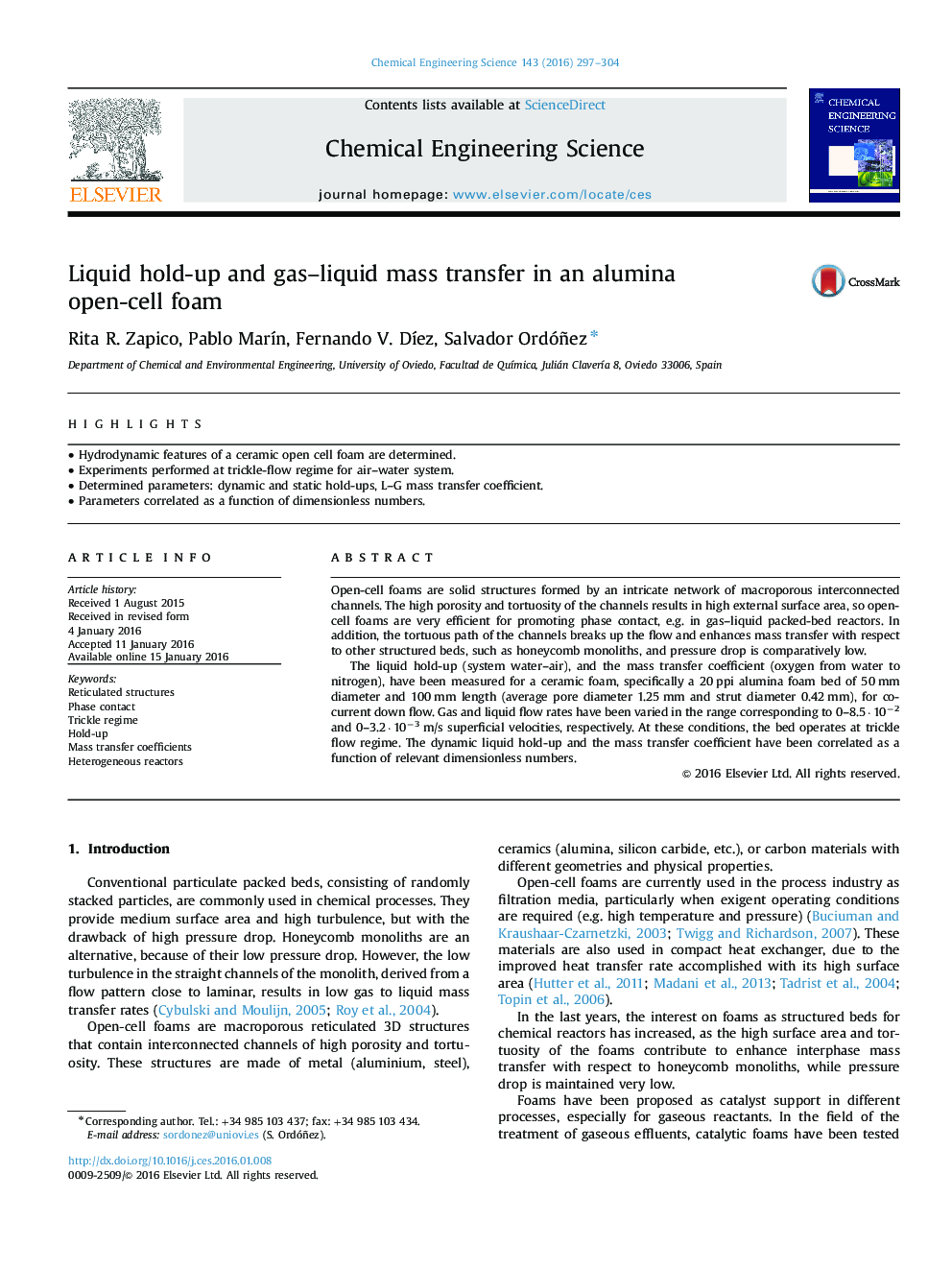| Article ID | Journal | Published Year | Pages | File Type |
|---|---|---|---|---|
| 154515 | Chemical Engineering Science | 2016 | 8 Pages |
•Hydrodynamic features of a ceramic open cell foam are determined.•Experiments performed at trickle-flow regime for air–water system.•Determined parameters: dynamic and static hold-ups, L–G mass transfer coefficient.•Parameters correlated as a function of dimensionless numbers.
Open-cell foams are solid structures formed by an intricate network of macroporous interconnected channels. The high porosity and tortuosity of the channels results in high external surface area, so open-cell foams are very efficient for promoting phase contact, e.g. in gas–liquid packed-bed reactors. In addition, the tortuous path of the channels breaks up the flow and enhances mass transfer with respect to other structured beds, such as honeycomb monoliths, and pressure drop is comparatively low.The liquid hold-up (system water–air), and the mass transfer coefficient (oxygen from water to nitrogen), have been measured for a ceramic foam, specifically a 20 ppi alumina foam bed of 50 mm diameter and 100 mm length (average pore diameter 1.25 mm and strut diameter 0.42 mm), for co-current down flow. Gas and liquid flow rates have been varied in the range corresponding to 0–8.5·10−2 and 0–3.2·10−3 m/s superficial velocities, respectively. At these conditions, the bed operates at trickle flow regime. The dynamic liquid hold-up and the mass transfer coefficient have been correlated as a function of relevant dimensionless numbers.
